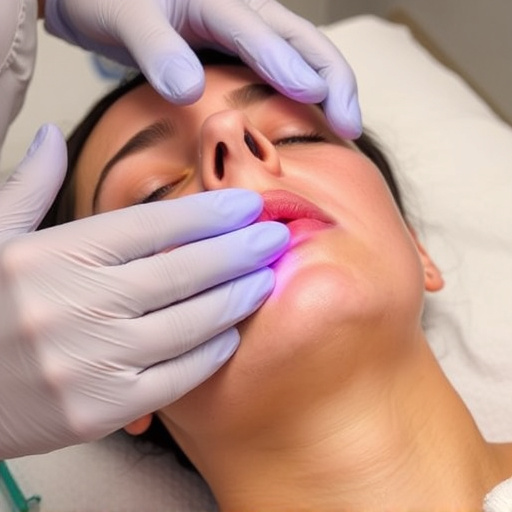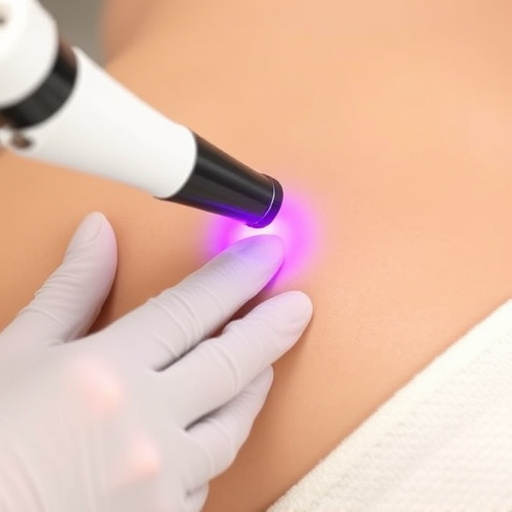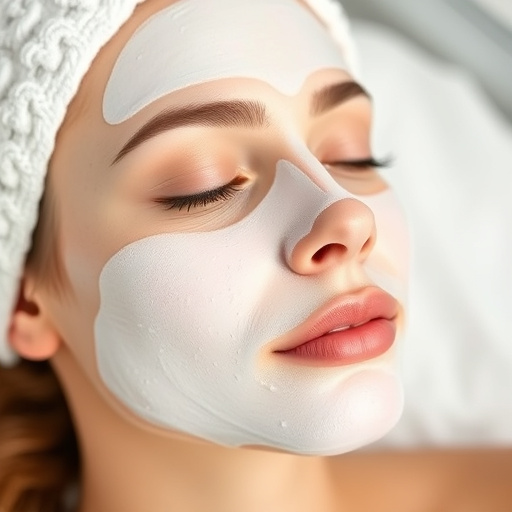Salicylic acid peels, derived from willow bark, are effective skincare treatments for acne, hyperpigmentation, and exfoliation. Customized facials, with adjusted concentration levels, target individual skin needs. While safe, they may cause temporary redness or irritation. To manage side effects, follow post-peel care instructions, protect from sunlight, and use gentle hydrating products. More aggressive treatments like chemical peels or microneedling can lead to increased sensitivity, flaking, or redness lasting several days; proper management includes sun protection and soothing products recommended by a dermatologist. Open communication with a qualified professional ensures optimal results while minimizing adverse reactions. Seek immediate medical advice for severe or persistent side effects, signs of infection, or severe symptoms like blistering or intense stinging.
“Uncover the benefits and potential risks of Salicylic Acid Peels—a popular skincare treatment. This comprehensive guide explores the basics of this chemical exfoliant, shedding light on its mechanism and why it’s a favorite among dermatologists. From minor side effects like redness and peeling to less common yet serious reactions, we demystify what to expect post-peel. Learn practical management techniques and know when to consult a professional for any concerning symptoms related to salicylic acid peels.”
- Understanding Salicylic Acid Peels: The Basics
- Common Side Effects and How to Manage Them
- When to Seek Medical Advice After a Peel
Understanding Salicylic Acid Peels: The Basics

Salicylic acid peels are a popular skincare treatment, offering a deep cleansing and exfoliating experience for those seeking improved skin health. This chemical peel works by gently lifting away dead skin cells and unclogging pores, making it particularly effective in acne treatments. The acid, derived from willow bark, has been used for centuries to soothe inflammation and promote healing. Modern aesthetics have streamlined its application, allowing for customized facials tailored to individual skin needs.
During a salicylic acid peel, a professional aesthetician applies the solution to the face, focusing on problem areas. The strength of the acid can vary, with higher concentrations suitable for more severe acne and deeper exfoliation. While it provides excellent results in clearing blemishes and refining skin texture, it’s essential to be aware of potential side effects. These may include temporary redness, irritation, or peeling as the skin adjusts to the treatment.
Common Side Effects and How to Manage Them

While salicylic acid peels are generally safe and effective for exfoliating the skin and addressing various conditions like acne and hyperpigmentation, they do come with potential side effects. Common complaints include temporary redness, itching, or stinging at the treatment site. These symptoms usually subside within a day or two as your skin adjusts to the procedure. To mitigate these effects, it’s crucial to follow post-peel care instructions provided by your dermatologist, including avoiding direct sunlight and using gentle, hydrating products.
For those considering more aggressive treatments like chemical peels or microneedling therapy for enhanced wrinkle reduction, understanding potential side effects is even more vital. These procedures may lead to increased skin sensitivity, flaking, or redness that can last several days. Proper management involves diligent sun protection, avoiding strenuous activities, and using soothing products recommended by your dermatologist. Remember, open communication with a qualified professional ensures the best results while minimising any adverse reactions.
When to Seek Medical Advice After a Peel

If you experience any severe or persistent side effects after a salicylic acid peel, it’s crucial to seek medical advice immediately. This is especially true if you notice signs of infection, such as increased redness, swelling, warmth, or discharge from the treated area. Additionally, if blistering, severe dryness, peeling beyond what is expected, or intense stinging occurs, consult a healthcare professional or dermatologist. These symptoms could indicate a more serious reaction or infection that requires prompt attention to prevent further complications and promote optimal skin health.
Remember, while salicylic acid peels are generally considered safe and effective for various aesthetic treatments and skin rejuvenation purposes, individual responses can vary. Your specialist will provide guidance on what constitutes normal post-peel discomfort versus when to expect more concerning symptoms. Always adhere to their recommendations for aftercare to ensure a smooth recovery and maintain your skin’s health and appearance.
While salicylic acid peels offer significant benefits for skin rejuvenation, it’s crucial to be aware of potential side effects. From redness and irritation to peeling and dryness, these treatments may cause temporary discomfort. However, with proper aftercare and knowledge of when to seek medical advice, you can minimize these effects and maximize the benefits. Always remember that a qualified dermatologist is your best resource for safe and effective skincare procedures, including salicylic acid peels.














